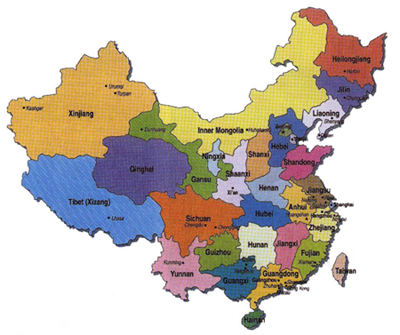The Future of Life, diversity | loss | problem | suggestions | triad | solutions | summary
|
 |
|---|---|
| E. O. Wilson | |
“the
effort to enlarge productive land will wipe out a large part of the world’s
flora and fauna.”
|
|
E. O. Wilson, The Future of Life, (2002) “We need nature and particularly its wilderness strongholds. It is the alien world that gave rise to our species, and the home to which we can safely return. It offers choices our spirit was designed to enjoy." Page, 148. |
|
The Problem | The Wealth of the World | economy | ecology | key idea | China | The Solution
![]()
Chapter 2: “The Bottleneck”
![]()
“In Short, we have entered the Century of the Environment, in which the immediate future is usefully conceived as a bottleneck. Science and Technology, combined with a lack of self understanding and Paleolithic obstinacy, brought us to where we are today.”
P. 23
“Now science and technology, combined with foresight and moral courage, must see us through the bottleneck and out.”
“cornucopian economist”
economist focused on production and consumption
The ecologist has a different worldview
Why not just say view of the world?
crop yields
overdrawn aquifers
&
Threatened ecosystems
P. 24

THE ECONOMIST – unprecedented prosperity
P. 24
“Social progress is running parallel to economic growth.”
P. 25
“For two centuries the specter of Malthus troubled the dreams of futurists.”
P. 25
“genius and effort have transformed the environment for the benefit of human life.”
P. 26
THE ENVIRONMENTALIST – economist only “painted half the picture.”
“we can no longer afford to ignore the dependency of the economy and social progress on the environmental resource base"
P. 26
$31 trillion global economic output for 6.2 billion inhabitants.
at 3% interest by 2050 we are at $138 trillion
“the economic boom will lose steam”
P. 27
“the effort to enlarge productive land will wipe out a large part of the world’s flora and fauna.”
the appropriation of productive land is defined as the ecological footprint
“In short, the Earth has lost its ability to regenerate -- unless global consumption is reduced, or global production is increased, or both”
P. 27
dramatizing these two polar views is not to suggest two cultures out of touch with one another
P. 27
The environmentalists view is spreading (fortunately)
P. 28
What then are the essential facts?
population and the environment
0ct 12, 1999 6 billion residents of the Earth was surpassed
1950 generation were the first people to see the world double in numbers in their lifetime.
P. 28
the pattern of human population growth.
P. 29
By the end of the century some relief was in sight.” because the average worldwide number of children per woman fell from 4.3 to 2.6 in 40 years after 1960.
the iron demographic laws grind on. --> “to breed in excess is to overload the planet.”
P. 29
Population decline set in among Euro-nations
P. 30
as the cohort ages the childbearing % of population declines and replacement level falls below 2.1
Three interlocking social factors account for the decline in the rate of the global population growth.
1 globalization of industry due to science and technology
2 implosion of rural populations into cities -- 50% of the world’s people are urban
3 “the empowerment of women.”
P. 30
The global trend toward smaller families and the consequent leveling (by 2050) of the population at
7.3 billion
10.8 billion
14.4 billion
P. 31
guarded optimism can be justified based on women’s education and access to contraception
Columbia and Indonesia are beginning too reach European levels of fertility control
P. 32
population control
reproductive rates in poor countries are informally high
poor populations continue to explode -- water is limited as is arable land
P. 32
Stretched to the limit s of its capacity, how many people can the planet support? 9-10 billion
“the constraints of the biosphere are fixed.”
P. 33
“We already appropriate 40% of the planet’s organic matter produced by green plants.”
P. 33
1.4 billion hectares or 3.5 billion acres of arable land worldwide
if we all were vegetarians the Earth could sustain 10 billion (skinny and healthy) people
P. 34
the planet converts 40 trillion watts of solar energy into standing produce (fuel -- fiber -- forage -- food).
China as a case study.
the epicenter of population pressure and ecological stress is China 1.2 billion, more than 1:6 are Chinese people.
P. 34
“China became in effect a great overcrowded island.”
P. 35
highly intelligently and innovative Chinese
slack in Chinese grain production can or may be compensated by the big five:
USA Canada Argentina Australia & EU
P. 35
China relies heavily on irrigation
P. 36
groundwater in the northern agricultural plains has dropped precipitously,
Xioalangdi Dam will be exceeded only by the Three Gorges Dam on the Yangtze
P. 36

This city was flooded by the buidling of the Yangtze dam below the three gorges.
These measures may not suffice to sustain China -- silting up of rivers
P. 37
one gigantic (costly) hydraulic (and electrical) system is necessary to sustain the numbers
of China’s 617 cities 300 are facing water shortages
China is a global lesson:
the populace consumes more food in every developed and developing nation as income rises
unless the water is subsidized the cost of food increases.
Public investment (eco-costs) must also rise
P. 37
Theory of affluent industrial development is flawed
P. 38
water manipulation alone fails so that agricultural practices must also change dramatically
surtax levied on the environment -- rarely reflected in the balance sheet -- is levied to a ruinous level
(externalities)
80% of China’s rivers ( 50,000 kilometers -- > 30,000 miles) no longer support fish
disease bacteria and flood are chronic
38.
China can probably feed itself to mid century -- (but then what?)
P. 39.
China deserves close attention
“Environmentalism is still viewed especially in the US as a special interest lobby.”
Environmentalism is something vastly more important and central
“The soil, water and atmosphere of its surface have evolved over hundreds of millions of years to their present condition by the activity of the biosphere, a stupendously complex layer of living creatures whose activities are locked together in precise but tenuous global cycles of energy and transformed organic matter,”
“shimmering physical disequilibrium”
“When we destroy ecosystems and extinguish species, we degrade the greatest heritage this planet has to offer and thereby threaten our own existence.”
P. 39.
Humanity is awed, venal -- not angelic -- but reckless and ignorant of biology
P. 40.
That is the essence of environmentalism, the guiding principle of those dedicated to restoring the planet’s health
deep within human nature springs the relative indifference of people to the environment
people are indifferent to the planet
“To look neither far ahead nor far afield is elemental in a Darwinian sense.”
The great dilemma of environmental reasoning stems from the conflict between short and long term values.
P. 40.
creating a universal environmental ethic is difficult
P. 41.
“but combine them we must
the only guide by which humanity and the rest of life can be safely conducted through the bottleneck into which our species has foolishly blundered.”
P. 41.
The Problem | The Wealth of the World | The Solution
The wealth of the world
![]()
The wealth of the world if measured by domestic product and per capita consumption, is rising. But if calculated from the condition of the biosphere, it is falling. The state of the latter, natural economy, as opposed to that of the former, market economy, is measured by the condition of the world’s forest, freshwater, and marine ecosystems.
1970-1995
actual biotic wealth fell 30 per cent
1990s the decline is 3 per cent per year
“the faraway fall of ancient forests and extinction of species are easily deferred as ‘externalities’.”
p. 42
“Overpopulation and environmentally ignorant development are everywhere shrinking natural habitats and biological diversity.”
“it will be a Cadmean victory, in which first the biosphere loses, then humanity.”
p. 43
Hawaii 125-145 endemic bird species before humans, now 35 remain and 24 are endangered.
44.
Pigs and ants are wreaking havoc on native flora and fauna
44-48
“Homogocene”
rats, mongooses, cats
49
“the decline of any particular species rarely has a single cause.”
Typically, multiple forces entrained by human activity reinforce one another and either simultaneously or in sequence force the species down.
These factors are summarized by conservation biologists under the the acronym HIPPO:
50
• Habitat destruction
• Invasive species
• Pollution
• Population
• Overharvesting
“the prime mover of the incursive forces around the world is the second P in HIPPO – too many people consuming too much of the land and sea space and the resources they contain.
HIPPO forces join to weaken and extinguish biological diversity.” (p. 51)
Vancouver Island marmot
51
Among the most massive losses of recent decades has been the frog die-off.
Since the 1980s…”were in steep decline.”
54
“reports poured in of decline of amphibians elsewhere.”
Of 936 amphibia pops in 37 nations
“they concluded that amphibian numbers had been dropping at the rate of 2 percent per year since at least as far back as the 1960s.”
55
Frog, rana mucosa disappeared from the western slopes of the Sierra Nevada
55
destruction of habitat and an increase in UVb radiation in the Cascades
“due,…to the thinning of the Earth’s ozone layer, another human caused alteration of the environment and one most severe in high latitudes.”
55.
“The growth of abnormalities are believed to be caused by chemical pollutants; among the prime suspects is methoprene, sprayed in the water to prevent the growth of mosquito larva.”
55
“Frogs are nature’s canary in the mine.”
56
“We ourselves could not have devised a better early warning device for general environmental deterioration than a frog.”
56
“Ten percent is not enough to save the Amazon as we know it.”
62
“In short, the damage inflicted on the great Asian forests by human activity has turned El Nino’s from creators to destroyers."
66
ENSO
“In recent years ENSOs have grown in frequency and amplitude. It is tempting to link the trend to global warming, as some experts have done. The conclusion is not firm,
“Meanwhile, there can no longer be any reasonable doubt of global warming itself and its generally malign consequences for the environment and the human economy.”
67
“According to estimates based on tree rings, fossil air samples trapped in glacial ice, and other proxies (pollen grains and ocean sediments), the mean surface temperature of the Earth varied by less than 2ºF during most of the ten thousand years following the end of the last ice age. Then, from 1500 to 1900, it rose approximately .9ºF , and from 1900 to the present it has increased another 0.9ºF.
67.
The concentrations of carbon dioxide are now at the highest level recorded for the 400,l000 year span and now show no sign of leveling off. The same is true of methane and nitrous oxide.”
67.
In 1995, IPCC scientists…projected that the acceleration of global mean surface temperature will continue, resulting in a further increase between 1.8ºF and 6.3ºF by the year 2100.”
67-68.
“predict that is nothing is done"
“mean global surface temperature will rise by at least 2.5ºF and as high as 10.4ºF within this century.”
68.
“Many native species are already trapped in natural reserves that have become islands in a sea of cropland and suburban sprawl.”
FLA – drowned
69.
“No matter how sophisticated our science and technology advanced our culture, or powerful our robotic auxiliaries are, Homo sapiens remains in 2100 a relatively unchanged biological species.”
76
“the genetic homogenization of the world population by intermarriage, already well advanced, by 2000, has accelerated.”
feedback loops “bite back”
“Like human genetic diversity, the fragmentary biodiversity that survived to 2100 has also become much more geographically simplified.”
77
“The most memorable heritage of the twenty-first century will be the Age of Loneliness that lies before humanity.”
77.
because we are killing off the residents of our natural neighborhoods.
“the wondrous world that used to be.”
The Problem | The Wealth of the World | The Solution
The Solution
![]()
The sheer loss | Planet Index | solution's cost | remaining forested areas | subsidized spoilage | remedies
(Book's last chapter)
“our exertions also weaken
Earth.”
“What humanity is inflicting on itself and Earth is, to use a modern metaphor, the result of a mistake in capital investment. Having appropriated the planet’s natural resources, we choose to annuitize them with short-term maturity reached by progressively increasing payouts. At the time it seemed a wise decision. To many it still does.
“Moreover they are being decapitalized by over harvesting and environmental destruction.”
149
“With population and consumption continuing to grow, the per-capita resources left to be harvested are shrinking. The long-term prospects are not promising. Awakened at last to this approaching difficulty, we have begun a frantic search for substitutes.”
149-50
151
“an instinct to behave ethically.”
151
“The first step is to turn away from claims of inherent moral superiority based on political ideology and religious dogma. The problems of the environment have become too complicated to be solved by piety and an unyielding clash of good intentions.”
152
Twin Stereotypes –
“total-war portraits crafted for public consumption by extremists on both
sides.”
People first critic vs.
Environmentalist
152-154
“The precepts of the
people-firsters are foundationally just as ethical as those of the traditional
environmentalists, but there arguments are more about method and short-term
results.”
155
The sheer loss | Planet Index | solution's cost | remaining forested areas | subsidized spoilage | remedies
The Poor
![]()
“The juggernaut of
technology-based capitalism will not be stopped. Its momentum is reinforced by
billions of poor people in developing countries anxious to participate in order
to share the material wealth of industrialized nations.”
“Science and technology are
themselves reasons for optimism.”
156
Concrete measures such as the
ecological footprint and the Living Planet Index form the groundwork for wiser
economic planning. Science and technology also promise a means for raising
per-capita food production while decreasing materials and energy consumption,
both of which are preconditions for successful long-term conservation and a sustainable
economy.”
156-57
Role of religion reveals
global change in attitudes from dominion to stewardship
“to active in conservation.”
158
“symptomatic of the trend
toward moral consensus…”
159
“The convergence in opinion
is strong enough that the problem is no longer reasons for conservation but the
best method to achieve it.”
- Salvage immediately the world’s
hotspots…twenty-five of these special ecosystems
- Keep intact the five remaining frontier forests,
which are the last true wilderness
- Cease all logging of old growth forests
everywhere.
- Everywhere…concentrate of lakes and river
systems, which are the most threatened
- Define precisely the marine hotspots; Maldives,
Caribbean, Philippines, etc.
- Complete the mapping of the world’s biological
diversity …into a bio encyclopedia
- Mapping the planet’s terrestrial, freshwater and
marine ecosystems …to conserve
- Make conservation profitable.
- Use biodiversity to more effectively benefit the
world economy as a whole
- Initiate restoration projects to increase the
share of Earth allotted to nature.
- Increase the capacity of zoos and botanical
gardens to breed endangered species.
- Support population planning…. guide humanity
everywhere to a smaller biomass.
160-64
“The only secure way to save
species as well as the cheapest (and on the evidence the only sane way), is to
preserve the natural ecosystems they now compose.”
164
Earth is still productive
enough and human ingenuity creative enough not only to feed the world now but
also to raise the standard of living of the population projected to at least
the middle of the twenty-first century.”
“One key element, the
protection and management of the world’s existing natural reserves, could be
financed by a one-cent-per-cup tax on coffee.”
164
The sheer loss | Planet Index | solution's cost | remaining forested areas | subsidized spoilage | remedies
TRIAD
Private Sector
Government Science
and Technology
164
Solutions arise from local and international teams cooperating in the:
-
inventory & identification
-
mapping
-
incentivizing protection
-
employing local people
-
new means of leveraging existing financial, commercial and monetary opportunities.
“The private sector, working
within the public trust constraints defined by government policy, is the engine
of society. A strong economy improves the material quality of life, allowing
the populace to look and plan ahead in all venues important to them.”
165
The interlocking of three key
agents is vital to global conservation.”
NGOs, or “Non-governmental
organizations.” Conservation
International, CI
165-166
“The swift ascendancy of the
NGOs reflects the perception within the global conservation movement that the
extinction crisis has turned critical.”
166
WWF “One of the flagship
organizations.”
“But its crusade steadily
broadened until it included all of the world’s threatened biodiversity.”
167

The five remaining frontier forests are:
- Indonesia (Sulawesi & New Guinea)
- Congo Basin in tropical west Africa
- Amazon Basin in South America
- Siberia's conifer and bog forests
- North American (US-Canadian boreal)
NGOs can and do form partnerships, new means
of broadening influence
168
Six major NGOs and their membership
$50- $100 million per year,
multinational operations, like CI with fewer members
169
“the Red List books of the International Union for the Conservation of Nature and Natural resources, IUCN
170-171
The sheer loss | Planet Index | solution's cost | remaining forested areas | goals | subsidized spoilage | remedies
“I found it a galling
experience to have to plead like a defense attorney in a court on behalf of
biodiversity, justifying its existence, asking that it be spared. I still feel
that way…”
171
Also under heavy pressure are
the rich hardwood and coniferous woodlands of western China and the southern
face of the Himalayas. Nepal, once gloriously clothed, has been largely denuded.”
“One of the first
innovations, introduced in the 1980s, was the debt-for-nature-swaps.”
172
The first conservation
concession was obtained in 2000 by CI from Guyana, a small…. interior
wilderness of mostly pristine rainforest…. Amerindians in the area will be
allowed to continue hunting, fishing and conducting small scale agriculture at
the level they practiced it for thousands of years.”
173
“Guyana…makes at least as
much money as it would from a timber lease (200,000 acre tract)
174
Suriname initiative
illustrates the final of three stages of nature conservation.
1.
The creation of individual reserves “reserves are the essential core of the
conservation agenda… but only a rear-guard action.”
2.
the second stage…is restoration, the enlargement of reserves by encouraging the re growth of natural habitat outward from the periphery of the
core reserve.
3. to
secure or rebuild wilderness by the
establishment of large natural corridors that connect existing parks and reserves.”
p. 177-78.
The sheer loss | Planet Index | solution's cost | remaining forested areas | goals | subsidized spoilage | remedies
Three stages of conservation examined: reserves, restoration, rebuilding.
-
reserves,
-
restoration,
-
rebuilding.
174-181
In 1990 dollars
“One recent study suggests
that an investment of $28 billion is needed to maintain at least a
representative sample of Earth’s ecosystems, land and sea, pole to pole. Beyond
a mere sample, a comparable sum would achieve a very high yield of species
level conservation through investment in the biologically richest segments,
especially in the tropics.
“$4 billion,” to manage
successfully what we have now protected.
182
“The tropical wilderness areas and the hottest of the
hotspots on the land and in shallow marine habitats which together contain
perhaps 70% of Earths plant and animal species can be saved by a single
investment of $30 billion.”
“about one-thousandth of the
annual combined gross national products of the world--”
“$6 billion spent annually
worldwide for nature protection”
So the question is do we refocus on the hottest of the hot spots for diversity
183
The sheer loss | Planet Index | solution's cost | remaining forested areas | goals | subsidized spoilage | remedies
![]()
Me] if $33 trillion per
annum is the (see Costanza) annual value of all the Earths’s natural processes
combined, then:
30,000,000,000 30 x 109 1
33,000,000,000,000,000 33 x 1015
1,100,000
one in a million or $ 1 to
spend socially for every million dollars the Earth provides annually
“some of the needed
governmental funding can be freed by ending perverse subsidies that aid
individual industries but are unnecessary for the country as a whole and
harmful to the environment.”
p. 183.
Norman Myers, 1998 analysis of
annual subsidies worldwide.
$390 to $520 billion for agriculture
$
110 billion in energy for fossil fuels and nuclear
$
220 billion for water
$
850-720 billion in sum
Three quarters of a trillion dollars or more (1998 value) annually in subsidies for food, water and energy.
“harmful to both our economies and our governments.”
“An additional heavy price,
difficult to measure but nevertheless substantial, is levied on the natural
environment, which carries the burden of extraction and consumption.”
“The average American pays
$2000 a year in subsidies, giving the lie to the belief the t the American economy
runs in a truly free competitive market. (-Enterprise)
184
![]()
"Monetize" carbon dioxide waste
Kyoto Protocol,…”would slow
the release of carbon dioxide and other greenhouse gasses threatening to
trigger the runaway warming of the Earth’s climate.”
184
ESA - Endangered Species Act
(1973) 390-12 HR and 92-0 Senate
“Without dispute, the most important conservation law in the history of the US…. unprecedented in its sweep. …every kind of plant and animal at risk….
Conclusion: in balancing human
and biological diversity’s needs, nothing
The sheer loss | Planet Index | solution's cost | remaining forested areas | goals | subsidized spoilage | remedies.
The Problem | The Wealth of the World | The Solution
E. O. Wilson, The Future of Life, 2002.
![]()
![]()


